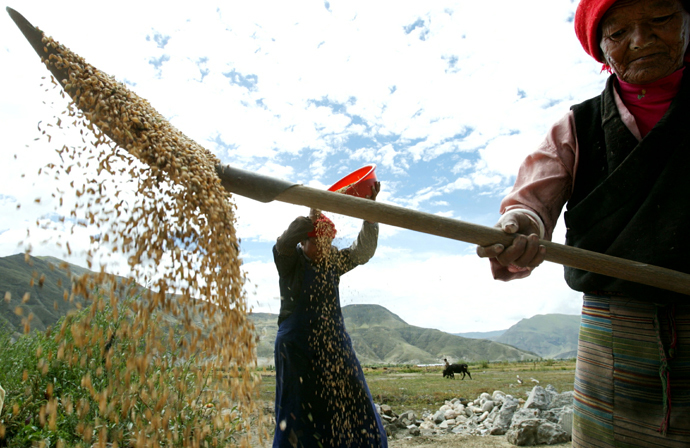
(TibetanReview.net, Nov24, 2014) – Humans had set foot on the Tibetan Plateau as early as 20,000 years ago and semi-permanently lived there some 5,200 ago, but fully settled on it as farmers only 3,600 years ago, according to a recent research led by Martin Jones from Cambridge University’s Department of Archaeology. The biggest impediment to human settlement on the Tibetan Plateau until then – apart from extreme altitude, frigid temperatures, relentless winds and low-oxygen conditions – was the absence of a food crop that could survive the frosty 3,400-meter altitude of the Tibetan Plateau.
It was only after they discovered how to feed themselves year-round with cold-hardy crops like barley brought to the region from far away that people did succeed in colonizing this remote land known as “the roof of the world”, said media reports, citing the scientists’ findings published in the journal Science Nov 20.
The scientists have found signs of periodic human presence dating to the Ice Age at least 20,000 years ago.

There were settlements at lower altitudes by 5,200 years ago, mainly in the valleys of the upper Yellow River, with inhabitants relying on millet, a frost-sensitive crop unsuited for the higher altitudes. They have described 53 archaeological sites in the traditional Amdo (or Domey) Province of Tibet (now Qinghai province of China) where they found remnants of rustic structures, hearths, pottery, animal bones, cereal grains and other evidence of human habitation from 5,600 feet to 11,000 feet (1,700 to 3,400 meters) above sea level.
Permanent settlements with agriculture and livestock were established about 3,600 years ago at higher altitudes – above 9,800 feet (3,000 meters) – after barley was introduced to the region. Unlike millet, barley flourishes even in the conditions of the Tibetan Plateau’s high altitudes.
“They could quite plausibly be the earliest sustained settlements in the world at this altitude,” Jones was quoted as saying.
According to the researchers, who were from China, the United States and Cambridge University in Britain, Barley was the main high-elevation crop, with wheat grown as well. Neither was native crop to the region. They were said to have been domesticated in the so-called Fertile Crescent of the ancient Near East thousands of years earlier and were introduced to this area about 4,000 years ago.
The researchers have added that livestock being also important for sustaining the settlements, domesticated sheep arrived at about the same time as barley and wheat.
Jones has said the early settlers not only conquered the extreme altitude raising livestock and growing crops, but also moved on to the higher, colder heights as the temperatures on continent were becoming colder.


